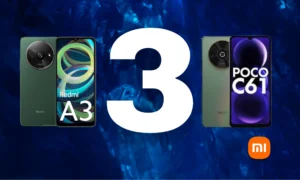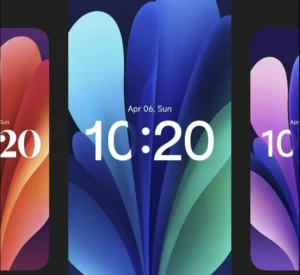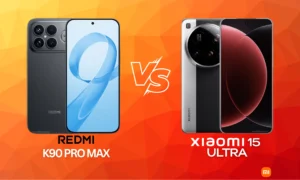Xiaomi’s Bold Move: Exploring a Google-Free Android Future

Recently, the tech world has been buzzing with rumors that major Chinese smartphone manufacturers—Xiaomi, Oppo, Vivo, and OnePlus—are considering the development of a Google-free version of Android. This potential shift could revolutionize the global smartphone market. The driving forces behind this initiative seem to be the escalating trade tensions between the U.S. and China, alongside a desire among these brands to lessen their reliance on Google’s ecosystem. Here at Xiaomi for All, we delve into Xiaomi’s pivotal role in this endeavor, particularly with its upcoming HyperOS 3.

Context: Trade Tensions and Lessons Learned from Huawei
The origins of this speculation can be traced back to the U.S. trade restrictions imposed during Donald Trump’s first term, which severely impacted Huawei. The ban on collaboration with U.S. companies, including Google, deprived Huawei of crucial access to Google Mobile Services (GMS) such as the Play Store, Gmail, and Google Maps. In response, Huawei developed HarmonyOS, which has gained significant traction in China, even surpassing iOS in market share within the country.
As Trump returns to the political spotlight, the intensifying trade war has prompted other Chinese brands—like Xiaomi, Oppo, Vivo, and OnePlus—to consider a “Plan B” to avoid a similar fate as Huawei. Together, these companies represent two-thirds of smartphone shipments in China and rank among the top five globally. They are keen to safeguard their operations against potential sanctions that could jeopardize access to Google services.
Xiaomi and HyperOS 3: Pioneering the Shift Towards Independence
Among the brands mentioned, Xiaomi appears to be leading this ambitious project. Reports from GSMArena and XiaomiTime indicate that Xiaomi is leveraging its HyperOS 3 as the foundation for exploring a Google-free Android version. HyperOS, which evolved from MIUI, is built on the Android Open Source Project (AOSP) and incorporates Xiaomi’s proprietary Vela system. This architecture allows Xiaomi to operate more autonomously in the face of Google restrictions.
HyperOS 3 is anticipated to launch soon and may establish an ecosystem that prioritizes Xiaomi’s internal services, including its app store, mapping, and email services. While it’s uncertain whether Xiaomi intends to completely abandon Google services, this initiative suggests a gradual transition toward a more independent system, especially in the Chinese market, where Google services are already limited.
Potential Collaborations: A Unified Front Against Google
Rumors also hint at a possible collaboration among Xiaomi, Oppo, Vivo, OnePlus, and Huawei. This partnership could be strategic, considering Huawei’s experience in creating a Google-free ecosystem with HarmonyOS. Speculations arise that these brands might either adopt HarmonyOS or develop a joint platform that combines elements of HyperOS, HarmonyOS, and the customized interfaces of Oppo (ColorOS), Vivo (FuntouchOS/OriginOS), and OnePlus (OxygenOS).
This type of collaboration would create a formidable technological bloc capable of competing with giants like Google and Apple. For instance, sharing resources to develop compatible applications and a unified app store could strengthen the ecosystem and attract developers, ensuring users have access to essential apps. However, the extent of Huawei’s involvement and the coordination among these historically competitive brands remain unclear.
Implications for Users and the Global Market
A Google-free Android would have profound implications for both users and the global smartphone market. For users, the primary concern would be the loss of access to Google Mobile Services, which are essential in many markets outside China. The absence of the Play Store, Google Maps, and Gmail could complicate app installations and data synchronization. Brands would need to provide robust alternatives, such as proprietary app stores and equivalent services, to mitigate this impact.
In China, where Google services are blocked, this transition would be less disruptive. Xiaomi, Oppo, Vivo, and OnePlus already distribute versions of their ROMs without Google, facilitating the shift. However, in international markets, a complete departure from Google could alienate consumers, particularly if banking and payment apps—often reliant on Google Play certification—become incompatible.
From a market perspective, a coordinated move by these brands could challenge Google’s dominance in the Android ecosystem. Xiaomi, Oppo, and Vivo rank among the top five smartphone manufacturers globally, and a shift towards a Google-free ecosystem could fragment the market, creating a third option alongside Google’s Android and Apple’s iOS. Moreover, by controlling their operating systems and app stores, these companies could increase revenue from digital purchases, a model successfully exploited by Apple.
Challenges and Skepticism Ahead
Despite the excitement surrounding these rumors, the path toward a Google-free Android is fraught with challenges. Developing a competitive ecosystem demands substantial financial and technical resources. Huawei invested billions in HarmonyOS, achieving success in China, but its global presence remains limited. For Xiaomi and its counterparts, replicating this success on an international scale would be monumental, especially given Western users’ reliance on Google services.
Maintaining compatibility with existing Android applications is crucial. Huawei, with HarmonyOS Next, chose to eliminate support for Android apps, forcing developers to adapt their applications. If Xiaomi, Oppo, Vivo, and OnePlus follow suit, they may face significant resistance from developers and users alike. Conversely, if they opt to maintain compatibility with AOSP, they could ensure a smoother transition, yet still partially rely on Android’s infrastructure.
Some analysts, such as those at HardwareZone, argue that these rumors may be exaggerated. Instead of a complete break from Google, it is more plausible that these brands are exploring ways to support Huawei’s applications (like AppGallery) without losing access to Google services. This approach would allow them to diversify their options without alienating international users.
The Future of Xiaomi and the Smartphone Market
For Xiaomi, the largest smartphone manufacturer in China and the third globally, this move represents both an opportunity and a risk. On one hand, leading the charge in creating a Google-free ecosystem could solidify its position as a top-tier tech player, especially if it forges effective alliances with Huawei, Oppo, Vivo, and OnePlus. On the other hand, a misstep—such as launching an operating system that fails to meet international user expectations—could harm its reputation and market share.
Currently, the rumors surrounding a Google-free Android remain just that—rumors. There is no official confirmation from Xiaomi or the other brands, and details about HyperOS 3 and its role in this project are sparse. However, given the geopolitical context and the rising influence of Chinese manufacturers, it is not far-fetched to anticipate that we are on the brink of a significant transformation in the smartphone landscape.
Conclusion
Xiaomi, with HyperOS 3, is positioning itself as a potential pioneer in the quest for a Google-independent Android, a move that could redefine the smartphone market. While collaboration with Oppo, Vivo, OnePlus, and Huawei promises a powerful tech bloc, the technical, commercial, and user acceptance challenges are substantial. As we await further details, one thing is clear: the smartphone industry stands at a crossroads, and Xiaomi could be leading the charge in this revolution.
Google-Free Android: The Future of Xiaomi and Beyond
A Google-free Android could reshape the smartphone landscape, offering exciting opportunities and significant challenges for Xiaomi and its competitors.
Tags: Xiaomi,Oppo,Vivo,OnePlus,Huawei,HyperOS
Google-free Android







